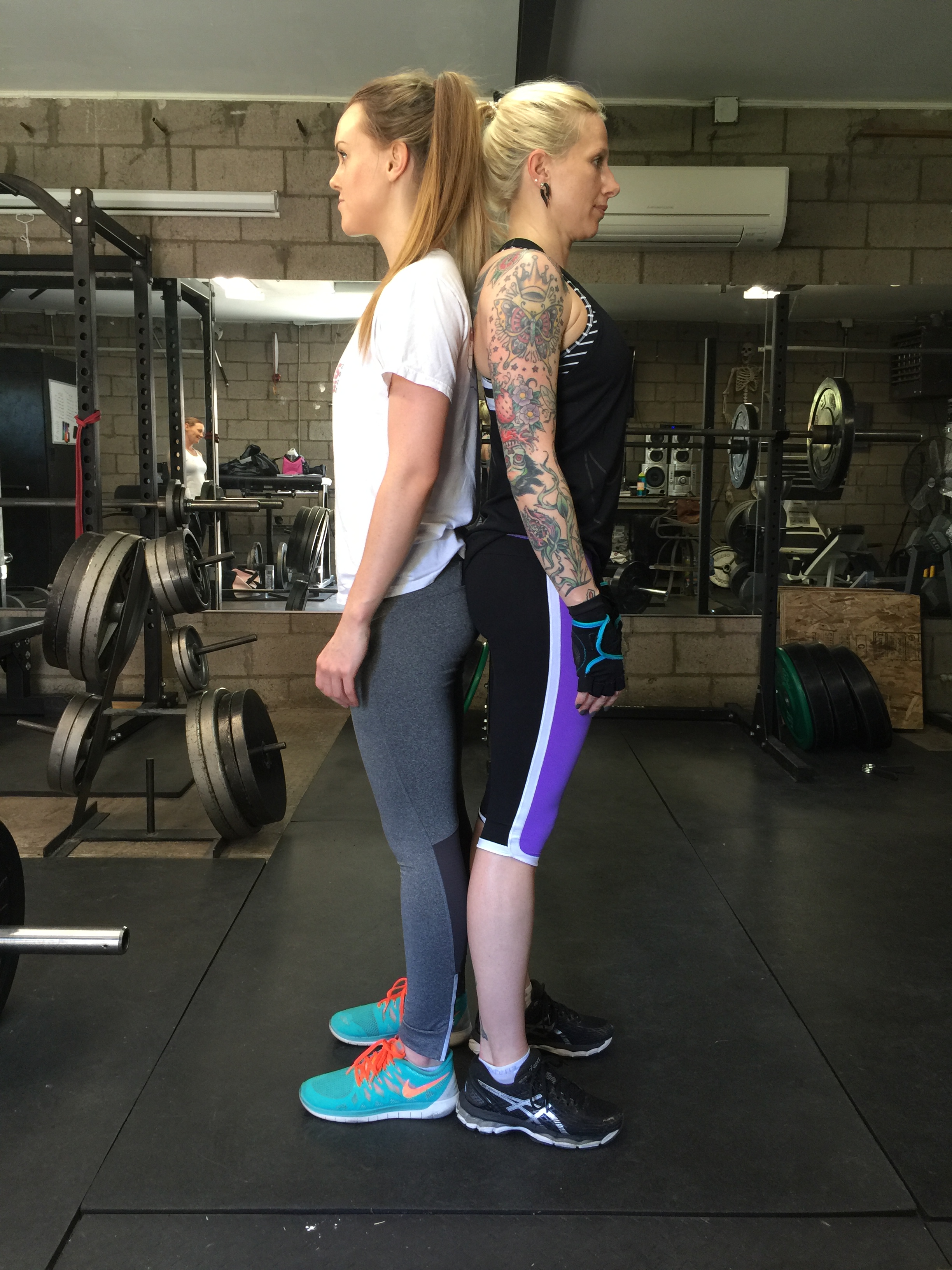01dragonslayer
Registered
- Joined
- Jun 18, 2022
- Messages
- 5,902
- Reaction score
- 3
- Points
- 38
Meet Maren and Brett, the two latest Glute Squad members. They are the same height, but their torso and femur proportions differ markedly. Maren has a longer torso and shorter femurs, whereas Brett has a short torso and long femurs. See how much higher Brett’s hip joint center is compared to Maren’s?

Left: Maren – longer torso, shorter femurs Right: Brett – shorter torso, longer femurs
I asked Maren and Brett to squat down with 95 lbs and hold the bottom position for a few seconds so I could snap a pic. I didn’t give them any instructions as I wanted to capture their natural squat mechanics.
Maren can stay very upright, prefers high bar squats, and goes very deep.

Brett necessarily leans forward considerably, prefers low bar squats, and goes just below parallel.

On social media, the majority of people would comment on how nice Maren’s squat is and praise her for her squatting prowess, and the same people would ridicule Brett and chastise her for not understanding that she needs to stay upright. A greater relative femur length leads to greater forward lean. Brett can’t stay upright even if she tries her hardest, and this becomes increasingly apparent with heavier loads. On the other hand, squatting comes quite naturally for Maren.
Why does this happen? Check out Tom Purvis’s two videos below on the topic:
Squat mechanics are highly influenced by anatomy and anthropometry.
Things that can lead to a more upright squatting posture:
Greater heel elevation (ex: WL shoes), greater ankle dorsiflexion mobility, shorter relative femur length and longer relative torso length, wider stance width, more abduction (knees out), a higher bar position on the back, greater relative quadriceps strength, and increased intent to target the knee extensors.
Things that can lead to a greater forward leaning squatting posture:
No heel elevation (ex: Chuck Taylors), restricted ankle dorsiflexion mobility, longer relative femur length and shorter relative torso length, narrower stance width, less abduction (knees in), a lower bar position on the back, greater relative gluteal strength, and increased intent to target the hip extensors.

Left: Maren – longer torso, shorter femurs Right: Brett – shorter torso, longer femurs
I asked Maren and Brett to squat down with 95 lbs and hold the bottom position for a few seconds so I could snap a pic. I didn’t give them any instructions as I wanted to capture their natural squat mechanics.
Maren can stay very upright, prefers high bar squats, and goes very deep.

Brett necessarily leans forward considerably, prefers low bar squats, and goes just below parallel.

On social media, the majority of people would comment on how nice Maren’s squat is and praise her for her squatting prowess, and the same people would ridicule Brett and chastise her for not understanding that she needs to stay upright. A greater relative femur length leads to greater forward lean. Brett can’t stay upright even if she tries her hardest, and this becomes increasingly apparent with heavier loads. On the other hand, squatting comes quite naturally for Maren.
Why does this happen? Check out Tom Purvis’s two videos below on the topic:
Squat mechanics are highly influenced by anatomy and anthropometry.
Things that can lead to a more upright squatting posture:
Greater heel elevation (ex: WL shoes), greater ankle dorsiflexion mobility, shorter relative femur length and longer relative torso length, wider stance width, more abduction (knees out), a higher bar position on the back, greater relative quadriceps strength, and increased intent to target the knee extensors.
Things that can lead to a greater forward leaning squatting posture:
No heel elevation (ex: Chuck Taylors), restricted ankle dorsiflexion mobility, longer relative femur length and shorter relative torso length, narrower stance width, less abduction (knees in), a lower bar position on the back, greater relative gluteal strength, and increased intent to target the hip extensors.
